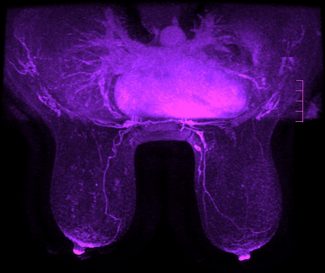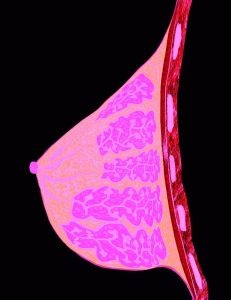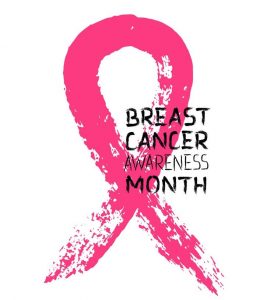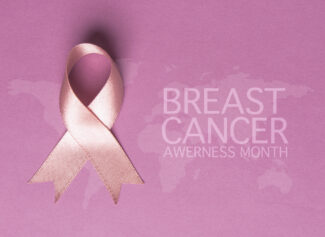 Breast cancer is one of the most common cancers among women, with nearly 1 in 8 women in the United States diagnosed in their lifetime. According to the National Breast Cancer Foundation, an estimated 310,720 women and 2,800 men will be diagnosed with invasive breast cancer, making it likely that each of us knows someone personally impacted by this disease.
Breast cancer is one of the most common cancers among women, with nearly 1 in 8 women in the United States diagnosed in their lifetime. According to the National Breast Cancer Foundation, an estimated 310,720 women and 2,800 men will be diagnosed with invasive breast cancer, making it likely that each of us knows someone personally impacted by this disease.
There is, however, promising news. Early detection can dramatically improve survival rates by catching cancer early. When breast cancer is detected in its earliest, localized stages, the five-year survival rate is as high as 99%. Advances in screening, diagnostic tools, and treatment options have significantly improved survival rates, contributing to a current total of over 4 million breast cancer survivors in the U.S. today.
Raising awareness of breast cancer risk factors and the benefits of early screening is vital during Breast Cancer Awareness Month empowering individuals to make informed choices about their health.
Understanding Breast Cancer and Key Risk Factors
Breast cancer is a complex disease with multiple types, each presenting unique characteristics and symptoms. Various risk factors contribute to breast cancer, and understanding these can aid in identifying individual risk levels.
Genetic Factors
Family history plays a significant role in breast cancer risk. Individuals with close relatives who have had breast cancer are at higher risk, particularly when mutations in genes such as BRCA1 and BRCA2 are present. These genetic mutations substantially increase the likelihood of developing breast cancer and are often associated with other cancer types, including ovarian cancer. Genetic testing can identify these mutations and help guide preventive strategies.
Age and Gender
Breast cancer risk increases with age, with the majority of cases diagnosed in women over 50. While breast cancer can affect both genders, it is significantly more common in women, accounting for over 99% of cases. For men, breast cancer is rarer but often diagnosed at a later stage, which can complicate treatment.
 Lifestyle Factors
Lifestyle Factors
Certain lifestyle choices are linked to an elevated risk of breast cancer:
- Diet and Exercise: A balanced diet rich in fruits, vegetables, and whole grains can reduce cancer risk, while diets high in processed foods and red meats are associated with higher risk levels. Regular physical activity is shown to lower risk by maintaining a healthy weight and reducing inflammation.
- Alcohol Consumption: Even moderate alcohol use has been linked to an increased risk, as it can alter estrogen levels and other hormones linked to breast cancer.
- Smoking: Smoking is a known risk factor, particularly in premenopausal women. It is also associated with more aggressive forms of breast cancer.
Hormonal Factors
Hormonal changes and therapies can impact breast cancer risk. Hormone replacement therapy (HRT), especially combined estrogen-progesterone therapy, has been shown to increase breast cancer risk, particularly when used for prolonged periods. Early menstruation (before age 12) and late menopause (after age 55) extend the body’s exposureto estrogen, which can also raise risk levels. Learn more about Breast Cancer Types, Staging, and Diagnostic Screening. Understanding these risk factors helps individuals make informed health decisions and reinforces the importance of regular screenings and healthy lifestyle choices.
 Breast Cancer in Young Women
Breast Cancer in Young Women
While breast cancer is less common in younger women, it can still occur, often presenting unique challenges. Young women diagnosed with breast cancer may face aggressive forms of the disease and higher mortality rates, making awareness and early detection crucial. The CDC’s Bring Your Brave campaign aims to raise awareness of breast cancer risks among young women, encouraging discussions about family history, genetic testing, and preventive strategies. This resource also provides stories, education, and support for young women navigating breast cancer.
Screening Recommendations for Breast Cancer
Routine breast cancer screenings are critical for early detection and reducing mortality. The American Cancer Society recommends the following:
- Women ages 40 to 44 should have the option to begin annual mammograms to screen for breast cancer.
- Women ages 45 to 54 should have a mammogram annually.
- Women 55 and older may continue with annual mammograms or switch to every two years.
Routine breast cancer screenings play a vital role in early detection and reducing mortality. For women at high risk—such as those with a family history, BRCA gene mutations, or previous high-dose chest radiation—doctors may suggest a specific screening plan. This often includes annual breast MRIs in addition to mammograms for enhanced detection. Dense breast tissue can also complicate mammogram readings, so an ultrasound or MRI may be beneficial in these cases.
Breast Cancer Screening Methods
 Below are key screening methods and guidelines:
Below are key screening methods and guidelines:
- Mammography: For women at average risk, annual or biennial mammograms are the primary screening method starting at age 40-50, as per guidelines from the American Cancer Society and CDC. For higher-risk individuals, mammograms may start earlier.
- Ultrasound and Breast MRI: Used as additional imaging, especially in those with dense breast tissue or increased risk. MRI is often paired with mammography in high-risk cases. Breast MRI is an advanced imaging option especially beneficial for those with a significant family history or known gene mutations (BRCA1/BRCA2). This imaging method provides highly detailed views, which are particularly useful in women with dense breast tissue. Unlike mammograms, MRI does not use radiation and can detect cancers not seen with other methods.
- Self-Exams: Monthly breast self-exams empower individuals to recognize changes in their breast tissue, promoting awareness of what’s normal and what may need medical attention. During self-exams, it’s essential to check for unusual lumps, skin changes, or other irregularities in the breast or underarm areas. Conducting self-exams at the same time each month, often a few days after a menstrual period helps detect subtle changes over time
Preparing for a Mammogram
To prepare for a mammogram, avoid wearing deodorant, lotion, or powder under your arms or on your breasts, as these can interfere with the imaging. Additionally, limit caffeine intake a few days before the appointment to reduce any tenderness. On the day of your appointment, wear a two-piece outfit for easy undressing from the waist up. Learn more Tips for Getting a Mammogram from the American Cancer Society.
Preparing for a Breast MRI
For a breast MRI, you can eat, drink, and take medications as usual. Before the procedure, you’ll need to remove all jewelry, metal, and piercings, as MRI uses strong magnets. If claustrophobic, consider discussing anti-anxiety medication with your doctor. Notify your healthcare provider of any allergies, implants, or health conditions like kidney issues. Women who are menstruating may be asked to schedule the MRI between days 5-15 of their cycle for optimal imaging. Learn more at the Mayo Clinic.
Types of Breast Cancer
 Breast cancer includes several types, each affecting the breast differently:
Breast cancer includes several types, each affecting the breast differently:
- Ductal Carcinoma in Situ (DCIS): A very early, highly treatable form where abnormal cells are confined to the milk ducts.
- Invasive Ductal Carcinoma (IDC): The most common type, accounting for 70-80% of cases, which spreads to surrounding tissue and can affect both women and men.
- Triple-Negative Breast Cancer: Lacks common receptors (estrogen, progesterone, HER-2/neu), more prevalent in younger individuals and certain ethnic groups.
- Inflammatory Breast Cancer (IBC): An aggressive type without a detectable tumor, presenting with skin redness, warmth, and swelling.
- Metastatic Breast Cancer: Stage 4 cancer that has spread to other organs, such as the lungs, liver, or bones.
Learn more about the types of breast cancer from the National Breast Cancer Foundation.
Stages of Breast Cancer
Breast cancer stages indicate how far cancer cells have spread and help guide treatment planning.
- Stages 0 & 1: Early-stage cancers. Stage 0 includes non-invasive types like DCIS, LCIS, and Paget disease, confined to ducts or lobules. Stage 1 involves small tumors with possible limited lymph node involvement.
- Stage 2: Cancer grows within the breast or nearby lymph nodes, split into 2A and 2B based on tumor size and lymph node spread.
- Stage 3: Cancer extends beyond the tumor’s immediate area, invading lymph nodes and nearby tissues, divided into 3A, 3B, and 3C, but has not spread to distant organs.
- Stage 4: Metastatic cancer, reaching distant organs like lungs, liver, bones, or brain. While advanced, current treatments offer improved outcomes and quality of life.
Breast Cancer Diagnosis Support and Resources

Navigating a breast cancer diagnosis can be overwhelming for patients and families, but numerous support and educational resources are available. The National Breast Cancer Foundation offers a variety of tools to aid patients and loved ones, including a Just Diagnosed eBook that guides patients through initial steps, as well as comprehensive Educational Guides covering treatment, side effects, and wellness.
For ongoing assistance, the foundation’s Support Resources include community support networks, financial assistance options, and local programs designed to support both emotional and practical needs. These resources empower patients to take informed steps while offering a solid support system through their journey.
Greater Waterbury Imaging Center cares about your health and wellness and encourages all women and men to talk to their doctors about preventive cancer screenings. Contact GWIC for all your MR imaging needs including breast MRI.


